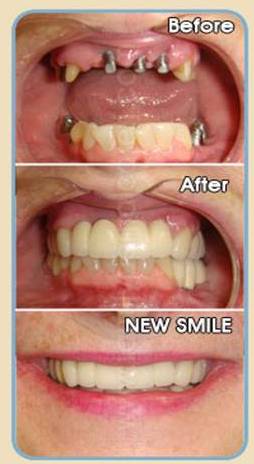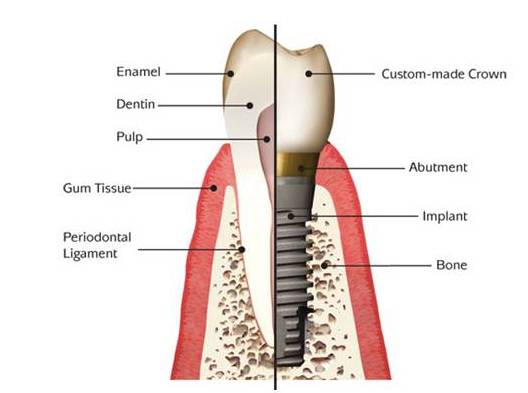
A smile makeover is the process of improving the appearance of the smile through one or more cosmetic dentistry procedures, such as dental veneers, composite bonding, tooth implants and teeth whitening.
What are dental implants
Dental implants are the closest artificial replacement for natural tooth roots.

They are made up of Titanium and have a screw shape which allows them to be placed into the jaw bone at the time of surgery. Over the next few months, the bone of the jaw forms an intimate bond with the implant which secures the implant in place. This is called osseointegration. Once integrated the implant can then form a stable and long-lasting foundation for the restoration of missing teeth in a variety of ways.
1. Advantages of Dental Implants
Implants avoid the preparation and damage to adjacent teeth that is needed for conventional crowns or bridges.

2. Bone Maintenance
When teeth are removed there is a tendency for the bone at that site in the jaw to recede. A dental implant reloads the bone with chewing forces and continues to maintain the bone in a similar way to the natural tooth root.
3. Increased Confidence
Many patients who have lost front teeth lose confidence with the day to day activities like eating with friends, smiling, talking etc. This may be due to discomfort when chewing or because of embarrassing experiences with false teeth.
Dental implants address these problems by providing a replacement for missing teeth which is stable or completely fixed like natural teeth.
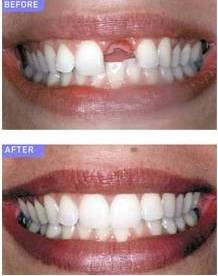
4. Improved Aesthetics and Facial Contour
Tooth and bone loss leads to changes in support for the lips and face causing premature aging. Dental implants can provide a foundation for new crowns, bridges or prosthesis that can restore the balance of the lips and face and reverse this premature aging.
5. Long term success
Dental implants have long term success rate of over 95%. They should, if cared for correctly, last as long as natural teeth.
What can Dental Implants do?
Single Tooth Replacement
Some patients may have lost only a single tooth. A single dental implant and crown can replace these teeth without the need to cut into adjacent healthy teeth to prepare conventional crowns or bridges.
Multiple Tooth Replacement
For larger gaps in the dental arch, a number of implants are placed and these are linked together by means of a fixed dental bridge. Each missing tooth doesn’t need to be replaced with an implant.
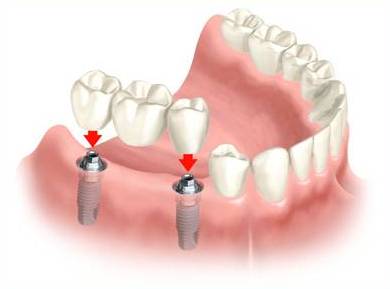
Full Arch Restoration
Some patients may have lost all or nearly all of their natural teeth. In this situation there are two main options.
Firstly the missing teeth can be replaced by a number of dental implants and a fixed bridge. This provides a fixed replacement for the lost natural teeth and allows the same level of function as the lost natural dentition.
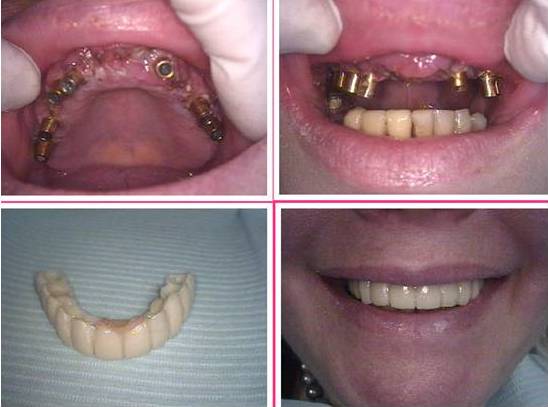
The second option is to provide a special type of denture (Overdenture) which locks onto the implants but is removable by the patient.
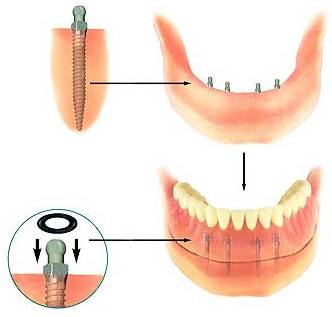
Immediate Replacement
As its name suggests this involves placing the implant in a tooth socket at the same time as the natural tooth is removed. This has some obvious appeal but not all patients are suitable for this technique.
Orthodontic Implants
Some patients receiving orthodontics need to use devices called headgear which can be very uncomfortable. Dental implants can provide an alternative to this by placing implants at the back of the mouth or palate. This tends to make treatment quicker, is less cumbersome and increases patient compliance and hence orthodontic success.
General Considerations
Am I suitable for dental implants?
There are few absolute reasons why patients would be unsuitable for dental implants and there are no higher age limitations on placement of implants.
- In the young adult implant placement is avoided until growth has stopped because the ankylosed implant would not follow the growth progression.
- Few medical conditions that would make a patient unsuitable for dental implants include:
- Uncontrolled Diabetes
- Heavy smoking
- Patients taking Bisphosphonates(a drug used to treat osteoporosis, multiple myelomas and breast cancer)
- Immunosuppressant Therapy
- Head and neck radiotherapy
- Bleeding Disorders
- Deficient bone volume, active gum disease or dental infection would compromise the long-term success of implant treatment. These conditions need to be corrected before the implant related treatment can begin.
How long will my treatment take?
On an average , treatment from implant placement to finish can be from as little as 4 weeks for a single implant and up to 6 months or more in complicated multiple implants with additional procedures such as bone grafting.
What does the surgery involve?
The surgery involves making an incision in the gum. The bone is prepared by slowly drilling a hole to accept the titanium implant. The implant(s) are then gently screwed into place.
The gum is stitched back in place with dissolving sutures. Sometimes the healing caps of the implants are visible through the gum and sometimes it is better to leave the implants buried beneath the gum. If this is the case, once healing is complete, the implant can easily be exposed in a few minutes under local anesthesia.
Will it hurt?
Implants can be placed under a variety of different anesthetics to ensure you are comfortable during your surgery. This may be local anesthetic, sedation or general anesthetic. After your surgery the area may be slightly painful and swollen depending on what treatment you have had. You will normally be prescribed both antibiotics and simple painkillers after your surgery to relieve your symptoms. You will also be advised on routine aftercare to keep your mouth healthy whilst your implants heal.
What is a bone graft and why would I need one?
Sometimes patients may have insufficient bone to ensure implants are placed successfully and with the best aesthetic results. The bone may be deficient either in a vertical or horizontal direction and this means that bone has to be bought in to make up this deficiency. This is called a bone graft.
What happens after my implant surgery?
The next stage after implant placement is the restorative phase. This is when the restorative dentist takes impressions in the mouth to allow crowns, bridges or new style dentures to be constructed accurately to fit your new dental implants.
Will I have to go without my denture or bridge before I have my new teeth?
Usually this is not necessary and the dentist can provide you with either a temporary bridge or denture to wear whilst your implants are healing.
After Care
What do I need to do to maintain my implants?
Implants require the same care to maintain them as healthy natural teeth. It involves a simple everyday tooth brushing and cleaning routine. If dental implants are not cared for correctly, deposits of plaque and calculus can develop around the implants which can produce inflammation and infection and can lead to loss of the implants.
